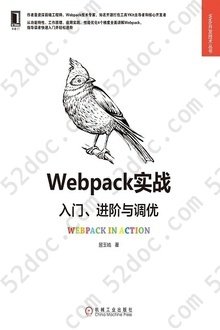该文章不存在或未发布
注重体验与质量的电子书资源下载网站
分类于: 设计 编程语言
简介

模式识别与神经网络 豆 8.0分
资源最后更新于 2020-09-27 15:07:36
作者:里普利
出版社:人民邮电
出版日期:2009-01
ISBN:9787115210647
文件格式: pdf
标签: 神经网络 模式识别 人工智能 pattern 经典 recognition 计算机 DM&ML&PR&CV&NLP&IR
简介· · · · · ·
《模式识别与神经网络(英文版)》是模式识别和神经网络方面的名著,讲述了模式识别所涉及的统计方法、神经网络和机器学习等分支。书的内容从介绍和例子开始,主要涵盖统计决策理论、线性判别分析、弹性判别分析、前馈神经网络、非参数方法、树结构分类、信念网、无监管方法、探寻优良的模式特性等方面的内容。
《模式识别与神经网络(英文版)》可作为统计与理工科研究生课程的教材,对模式识别和神经网络领域的研究人员也是极有价值的参考书。
目录
1 Introduction and Examples
1.1 How do neural methods differ?
1.2 The patterm recognition task
1.3 Overview of the remaining chapters
1.4 Examples
1.5 Literature
2 Statistical Decision Theory
2.1 Bayes rules for known distributions
2.2 Parametric models
2.3 Logistic discrimination
2.4 Predictive classification
2.5 Alternative estimation procedures
2.6 How complex a model do we need?
2.7 Performance assessment
2.8 Computational learning approaches
3 Linear Discriminant Analysis
3.1 Classical linear discriminatio
3.2 Linear discriminants via regression
3.3 Robustness
3.4 Shrinkage methods
3.5 Logistic discrimination
3.6 Linear separatio andperceptrons
4 Flexible Diseriminants
4.1 Fitting smooth parametric functions
4.2 Radial basis functions
4.3 Regularization
5 Feed-forward Neural Networks
5.1 Biological motivation
5.2 Theory
5.3 Learning algorithms
5.4 Examples
5.5 Bayesian perspectives
5.6 Network complexity
5.7 Approximation results
6 Non-parametric Methods
6.1 Non-parametric estlmation of class densities
6.2 Nearest neighbour methods
6 3 Learning vector quantization
6.4 Mixture representations
7 Tree-structured Classifiers
7.1 Splitting rules
7.2 Pruning rules
7.3 Missing values
7.4 Earlier approaches
7.5 Refinements
7.6 Relationships to neural networks
7.7 Bayesian trees
8 Belief Networks
8.1 Graphical models and networks
8.2 Causal networks
8 3 Learning the network structure
8.4 Boltzmann machines
8.5 Hierarchical mixtures of experts
9 Unsupervised Methods
9.1 Projection methods
9.2 Multidimensional scaling
9.3 Clustering algorithms
9.4 Self-organizing maps
10 Finding Good Pattern Features
10.1 Bounds for the Bayes error
10.2 Normal class distributions
10.3 Branch-and-bound techniques
10.4 Feature extraction
A Statistical Sidelines
A.1 Maximum likelihood and MAP estimation
A.2 The EM algorithm
A.3 Markov chain Monte Carlo
A.4 Axioms for conditional independence
A.5 Optimization
Glossary
References
Author Index
Subject Index
1.1 How do neural methods differ?
1.2 The patterm recognition task
1.3 Overview of the remaining chapters
1.4 Examples
1.5 Literature
2 Statistical Decision Theory
2.1 Bayes rules for known distributions
2.2 Parametric models
2.3 Logistic discrimination
2.4 Predictive classification
2.5 Alternative estimation procedures
2.6 How complex a model do we need?
2.7 Performance assessment
2.8 Computational learning approaches
3 Linear Discriminant Analysis
3.1 Classical linear discriminatio
3.2 Linear discriminants via regression
3.3 Robustness
3.4 Shrinkage methods
3.5 Logistic discrimination
3.6 Linear separatio andperceptrons
4 Flexible Diseriminants
4.1 Fitting smooth parametric functions
4.2 Radial basis functions
4.3 Regularization
5 Feed-forward Neural Networks
5.1 Biological motivation
5.2 Theory
5.3 Learning algorithms
5.4 Examples
5.5 Bayesian perspectives
5.6 Network complexity
5.7 Approximation results
6 Non-parametric Methods
6.1 Non-parametric estlmation of class densities
6.2 Nearest neighbour methods
6 3 Learning vector quantization
6.4 Mixture representations
7 Tree-structured Classifiers
7.1 Splitting rules
7.2 Pruning rules
7.3 Missing values
7.4 Earlier approaches
7.5 Refinements
7.6 Relationships to neural networks
7.7 Bayesian trees
8 Belief Networks
8.1 Graphical models and networks
8.2 Causal networks
8 3 Learning the network structure
8.4 Boltzmann machines
8.5 Hierarchical mixtures of experts
9 Unsupervised Methods
9.1 Projection methods
9.2 Multidimensional scaling
9.3 Clustering algorithms
9.4 Self-organizing maps
10 Finding Good Pattern Features
10.1 Bounds for the Bayes error
10.2 Normal class distributions
10.3 Branch-and-bound techniques
10.4 Feature extraction
A Statistical Sidelines
A.1 Maximum likelihood and MAP estimation
A.2 The EM algorithm
A.3 Markov chain Monte Carlo
A.4 Axioms for conditional independence
A.5 Optimization
Glossary
References
Author Index
Subject Index








